
|   |

|   |
Kaladhi Festival - Satish Suri e-mail: satishism@yahoo.co.in Photos: Sudhi May 30, 2025 The Kaladhi Festival, an annual event curated by Sonalika Purohit, presented an exceptional showcase of Indian classical dance, featuring Odissi, Kathak, and Bharatanatyam, on the 3rd of May at the A.D.A.Rangamandira, Bangalore. 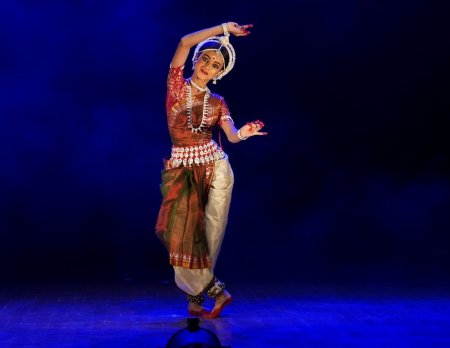 Shrinika Purohit The opening Odissi performance by Shrinika Purohit, "Panchabhuta", set the tone with meditative grace. Choreographed by Dr Aruna Mohanty and set to the rhythmically resonant Ektali tala, the work was rooted in the ancient Indian concept of the five elements - Earth, Water, Fire, Air, and Space. Each element was introduced as a symbol not only of materiality but of spiritual temperament: Earth representing stability, Water emotion, Fire transformation, Air the life force, and Space the infinite void. With sculptural poise and contemplative movement, Shrinika's Odissi vocabulary expanded beyond codified aesthetics to convey the inner essence of each element. Her transitions between the elements were seamless, almost as if the body itself became a conduit for nature's subtle pulsations. 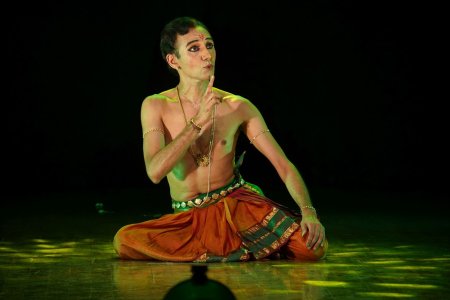 P Praveen Kumar This journey from elemental to epic continued with P. Praveen Kumar's evocative production 'Saumitri', based on select episodes from the Srimad Valmiki Ramayana. Delving into the inner world of Lakshmana - Rama's devoted brother - the performance explored his moral fortitude, restraint, and unshakeable sense of duty. Anchored in poetic verse and interpretative movement, Lakshmana was revealed not merely as a loyal sibling but as a spiritual archetype - an incarnation of Adisesha, the eternal supporter of Vishnu. The work brought alive Lakshmana's rage during Rama's exile, his renunciation of royal comfort, and his austere conduct in the forest. Particularly poignant was the moment when Rama finds Sita's abandoned jewellery, and Lakshmana, in reverent humility, identifies only her anklets - having never looked upon her above her feet. With music by Praveen D. Rao and dramaturgical support by Arjun Bharadwaj, the piece combined a scholarly approach with emotive execution. Praveen Kumar's refined abhinaya and economic movement vocabulary brought an intensity to Lakshmana's silences as much as to his action, culminating in a tribute to dharma practised in its highest form. 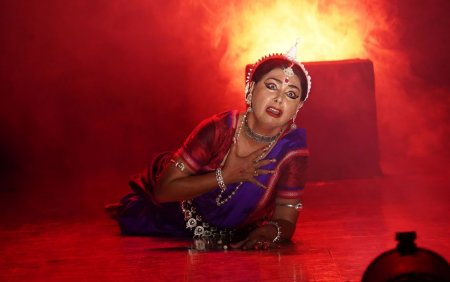 Dr Aruna Mohanty The artistic continuity of the festival was further enhanced through two powerful Odissi solos by Dr Aruna Mohanty, which explored womanhood and war from sharply different lenses. In 'Bhumisuta', she gave voice to Sita at the moment of her return to the earth. Beginning with her birth from the sacred soil, her life as Rajanandini Janaki, the joys and burdens of marriage, and the emotional anguish post her abduction by Ravana, the work culminated in Sita's final act of agency - her rejection of patriarchal demands to prove her purity. Performed to a Ragamalika and Talamalika, the music composed by Rupak Kumar Parida and Bijaya Kumar Barik provided the emotional scaffolding for a performance layered with pathos, dignity, and quiet rebellion. Aruna's portrayal reminded the audience that Sita's surrender was not a weakness but a powerful return to the maternal earth that first gave her life. If Bhumisuta was an internalized invocation of feminine strength, 'Aswatthama' was a psychological descent into masculine rage and moral collapse. The character of Ashwatthama - son of Dronacharya - was brought to life as a man wronged by circumstance and consumed by fury. Despite his military brilliance, his Brahmin birth relegated him to the margins of the battlefield. When finally given power, he violated the sacred ethics of warfare, killing the sleeping sons of the Pandavas. Krishna's rebuke and subsequent curse to eternal life - not as grace but as punishment - was chilling in its finality: "You shall live for a thousand years... not in death, but as a soul wounded in hell." Aruna's performance moved through this arc with layered intensity, showing a warrior's pride, his fall, and the existential burden of immortality without redemption. 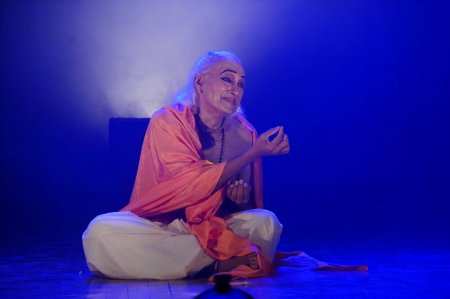 Mysore B Nagaraj The narrative momentum of the festival continued with Mysore B. Nagaraj's 'Shabari Moksha - Navadha Bhakti,' a Kathak solo inspired by the devotional traditions of Kathavachan. Drawing from Tulsidas's Ramcharitmanas, the performance opened with Nagaraj as Tulsidas reciting invocatory shlokas. A mere flip of a saffron cloth transformed him into Shabari, the forest-dwelling devotee who awaited Sri Rama's arrival for years. With remarkable fluidity, he portrayed Shabari's humble act of offering tasted fruits to Rama, her expressions of unworthiness, and the Lord's response, which outlined the Navadha Bhakti - nine devotional paths to attain salvation. Accompanied by the sensitive compositions of Purushottam Upadhyaya and the emotive voice of Ravindra Sathe, the performance was a masterclass in narrative abhinaya, symbolic transformation, and spiritual intensity. The concept of moksha was rendered not as a distant philosophical goal but as an accessible grace achieved through devotion and simplicity. The festival drew to a close with Shrinika Purohit's return to the stage in a vibrant pure dance offering, Chandrakosh Pallavi. Here, the mood was celebratory and abstract - a shift from storytelling to rhythm, from metaphor to geometry. Set to the rarely used Pancham Savari Tala (15 beats divided 4-3-4-4), and composed in raga Chandrakosh, the piece was choreographed by Ratikant Mohapatra and set to music by Pradip Kumar Das. Shrinika handled the challenging tala structure with aplomb, offering fluid torso movements, crisp footwork, and a dynamic interplay between stillness and flow. The Pallavi became a canvas for rhythmic exploration, with complex bhramaris and precise chhanda delineating both the mood of the raga and the beat cycle. Across its breadth, the Kaladhi Festival succeeded in weaving together narratives of elemental balance, epic valour, inner conflict, and pure rhythmic delight. The festival did not merely showcase performances - it curated experiences that invited reflection. Each artiste contributed a unique voice to a collective expression that was at once classical and contemporary, anchored in tradition yet speaking to the current moment. 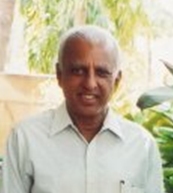 Bangalore based Satish Suri is an avid dance rasika besides being a life member of the Music and Arts Society. |